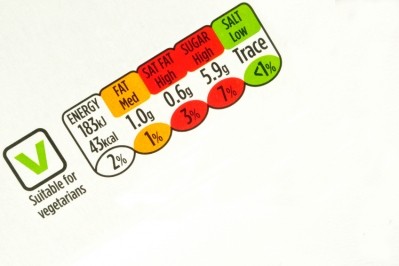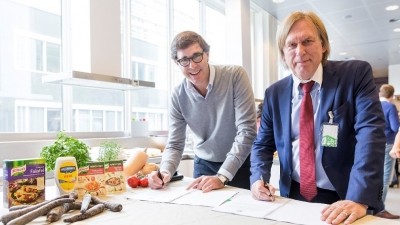5-c creator Serge Hercberg on nutrition logos, lobbies and conflicts of interest
Director of nutrition research at the University of Paris 13, Hercberg led the team of researchers that developed the five colour nutrition logo which, according to academic studies, is the most easily understood by consumers, and the most effective in fuelling health eating choices.
But instead of being adopted by the Ministry of Health, it is currently being trialled in a select number of French supermarkets along with other potential nutrition logos.
Professor Hercberg spoke to FoodNavigator about the influence of lobbies and conflicts of interest in this trial period, and whether he is optimistic that the best choice for public health will be made.
Why is 5c best?
Hercberg explains:
- It’s simple: The colours run from green to red are intuitive and meaningful for consumers.
- Unlike the UK’s traffic light logo, which can give one product a green light for sugar and a red light for fat (confusing for consumers), the 5c logo takes into account a product’s global nutrient profile, and includes pink and orange colours.
- It lets people compare products within the same food type, between food types or between different brands.
- Studies have shown that it is easily understood by lower socio-economic groups who tend to need clear nutrition advice the most.
- It does not discriminate whole categories: only 15% of cheeses have a red label, for instance.
- It will encourage healthy reformulation.
“The food and retail lobbies have pushed the Health Ministry to carry out a so-called ‘life-size’ trial period in supermarkets. From a methodological perspective it’s very complicated. No country has ever done it – not because they don’t want to but because it’s so complex and wastes time.
“Above all, the protocol being used is controversial, there are conflicts of interest and it has led to the resignation of several researchers including the CEO of [France’s national research institute] INSERM who sat on the study’s steering committee. This shows how dubious the methodology is.”
Professor Hercberg added that not enough products have the logo – only around 50% - to give the researchers an accurate idea, with many brands opted out.
“We risk ending up with a study that doesn’t answer any questions. Worse still, it was not given to a team of academics researchers but a structure financed 100% by the food industry. It’s a waste of time and money. It will cost more than two million euros and will produce a very uncertain outcome.”
“Of course, this is just one element of public health policy," he added. "Nutrition problems will not be solved with one logo, but it’s consistent with other tools of information and education.”
To read more about France's trial period and the different nutrition logos that are being tested, click here.


















